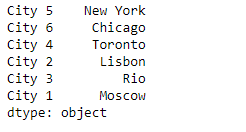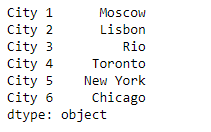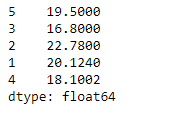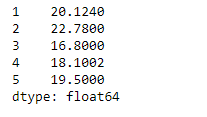Python Pandas Series.sort_index()
Pandas系列是一个带有轴标签的一维ndarray。标签不需要是唯一的,但必须是一个可散列的类型。该对象支持基于整数和标签的索引,并提供了大量的方法来执行涉及索引的操作。
Pandas Series.sort_index()函数用于对给定系列对象的索引标签进行排序。
语法: Series.sort_index(axis=0, level=None, ascending=True, inplace=False, kind=’quicksort’, na_position=’last’, sort_remaining=True)
参数:
axis :轴来指导排序。对于系列,这只能是0。
level : 如果不是无,则按指定的索引级别的值排序。
ascending:升序排序与降序排序。
inplace : 如果为真,就地执行操作。
kind:选择排序算法。
na_position : 参数’first’将NaNs放在开头,’last’将NaNs放在结尾。
sort_remaining : 如果为真,并且按级别和索引排序是多级别的,在按指定级别排序后,也按其他级别排序(按顺序)。
返回:系列
示例#1:使用Series.sort_index()函数对给定系列对象的索引标签进行排序。
# importing pandas as pd
import pandas as pd
# Creating the Series
sr = pd.Series(['New York', 'Chicago', 'Toronto', 'Lisbon', 'Rio', 'Moscow'])
# Create the Index
index_ = ['City 5', 'City 6', 'City 4', 'City 2', 'City 3', 'City 1']
# set the index
sr.index = index_
# Print the series
print(sr)
输出 :

现在我们将使用Series.sort_index()函数对给定系列对象的索引标签进行排序。
# sort the index labels
sr.sort_index()
输出 :

正如我们在输出中看到的,Series.sort_index()函数已经成功地对给定系列对象的索引标签进行了排序。
示例#2:使用Series.sort_index()函数对给定系列对象的索引标签进行排序。
# importing pandas as pd
import pandas as pd
# Creating the Series
sr = pd.Series([19.5, 16.8, 22.78, 20.124, 18.1002])
# Create the Index
index_ = [5, 3, 2, 1, 4]
# set the index
sr.index = index_
# Print the series
print(sr)
输出 :

现在我们将使用Series.sort_index()函数对给定系列对象的索引标签进行排序。
# sort the index labels
sr.sort_index()
输出 :

正如我们在输出中看到的,Series.sort_index()函数已经成功地对给定系列对象的索引标签进行了排序。
 极客教程
极客教程